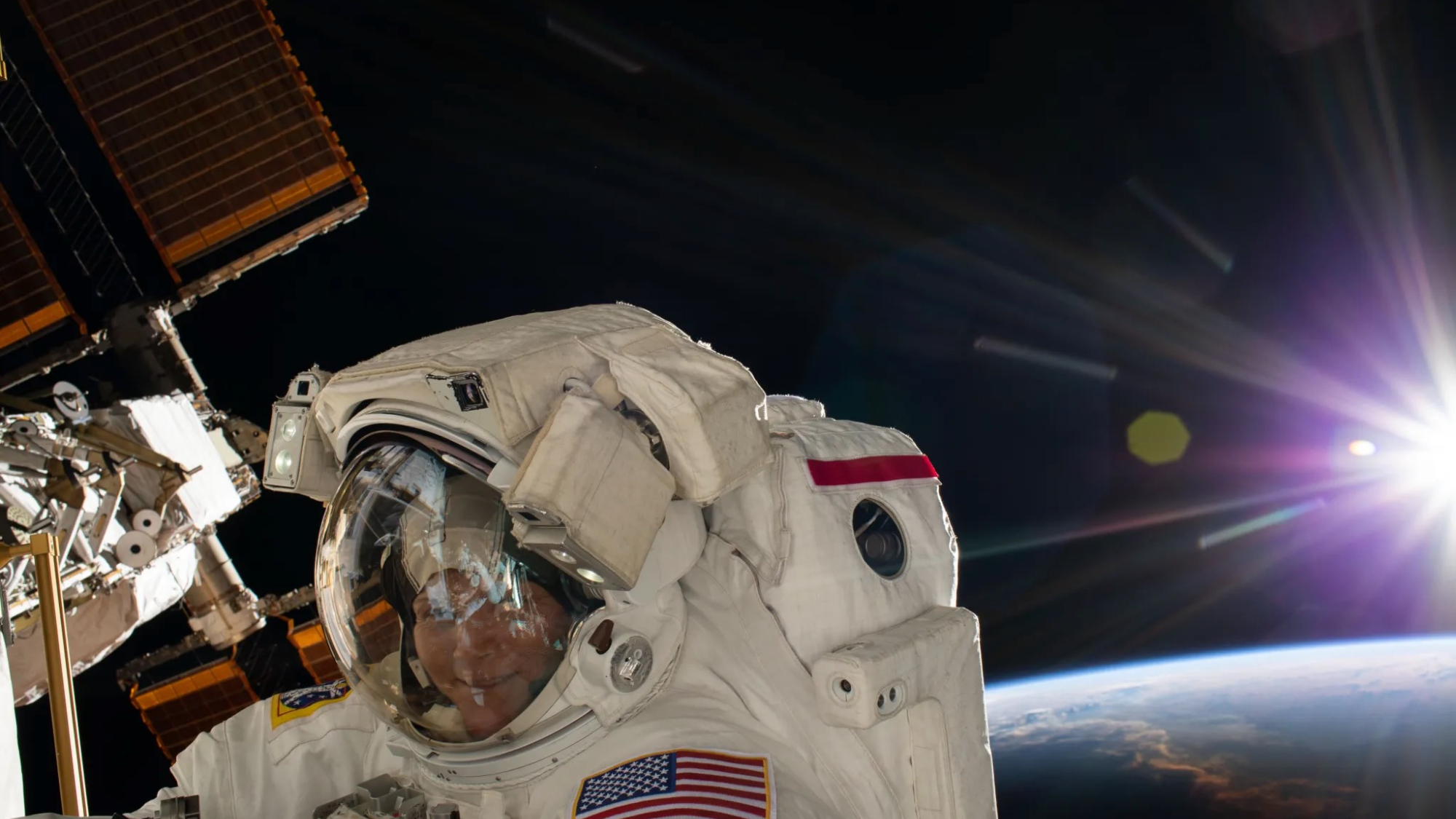
A Chinese satellite has split pairs of "entangled photons" and transmitted them to separate ground stations 745 miles (1,200 kilometers) apart, smashing the previous distance record for such a feat and opening new possibilities in quantum communication.
In quantum physics, when particles interact with each other in certain ways they become "entangled." This essentially means they remain connected even when separated by large distances, so that an action performed on one affects the other.
In a new study published online today (June 15) in the journal Science, researchers report the successful distribution of entangled photon pairs to two locations on Earth separated by 747.5 miles (1,203 km). [The 18 Biggest Unsolved Mysteries in Physics]
Quantum entanglement has interesting applications for testing the fundamental laws of physics, but also for creating exceptionally secure communication systems, scientists have said. That's because quantum mechanics states that measuring a quantum system inevitably disturbs it, so any attempt to eavesdrop is impossible to hide.
But, it's hard to distribute entangled particles — normally photons — over large distances. When traveling through air or over fiber-optic cables, the environment interferes with the particles, so with greater distances, the signal decays and becomes too weak to be useful.
In 2003, Pan Jianwei, a professor of quantum physics at the University of Science and Technology of China, started work on a satellite-based system designed to beam entangled photon pairs down to ground stations. The idea was that because most of the particle's journey would be through the vacuum of space, this system would introduce considerably less environmental interference.
"Many people then thought it [was] a crazy idea, because it was very challenging already doing the sophisticated quantum-optics experiments inside a well-shielded optical table," Pan told Live Science. "So how can you do similar experiments at thousand-kilometers distance scale and with the optical elements vibrating and moving at a speed of 8 kilometers per second [5 miles per second]?"
Get the Space.com Newsletter
Breaking space news, the latest updates on rocket launches, skywatching events and more!
In the new study, researchers used China's Micius satellite, which was launched last year, to transmit the entangled photon pairs. The satellite features an ultrabright entangled photon source and a high-precision acquiring, pointing and tracking (APT) system that uses beacon lasers on the satellite and at three ground stations to line up the transmitter and receivers.
Once the photons reached the ground stations, the scientists carried out tests and confirmed that the particles were still entangled despite having traveled between 994 miles and 1,490 miles (1,600 and 2,400 km), depending on what stage of its orbit the satellite was positioned at.
Only the lowest 6 miles (10 km) of Earth's atmosphere are thick enough to cause significant interference with the photons, the scientists said. This means the overall efficiency of their link was vastly higher than previous methods for distributing entangled photons via fiber-optic cables, according to the scientists. [Twisted Physics: 7 Mind-Blowing Findings]
"We have already achieved a two-photon entanglement distribution efficiency a trillion times more efficient than using the best telecommunication fibers," Pan said. "We have done something that was absolutely impossible without the satellite."
Apart from carrying out experiments, one of the potential uses for this kind of system is for "quantum key distribution," in which quantum communication systems are used to share an encryption key between two parties that is impossible to intercept without alerting the users. When combined with the correct encryption algorithm, this system is uncrackable even if encrypted messages are sent over normal communication channels, experts have said.
Artur Ekert, a professor of quantum physics at the University of Oxford in the United Kingdom, was the first to describe how entangled photons could be used to transmit an encryption key.
"The Chinese experiment is quite a remarkable technological achievement," Ekert told Live Science. "When I proposed the entangled-based quantum key distribution back in 1991 when I was a student in Oxford, I did not expect it to be elevated to such heights!"
The current satellite is not quite ready for use in practical quantum communication systems, though, according to Pan. For one, its relatively low orbit means each ground station has coverage for only about 5 minutes each day, and the wavelength of photons used means it can only operate at night, he said.
Boosting coverage times and areas will mean launching new satellites with higher orbits, Pan said, but this will require bigger telescopes, more precise tracking and higher link efficiency. Daytime operation will require the use of photons in the telecommunications wavelengths, he added.
But while developing future quantum communication networks will require considerable work, Thomas Jennewein, an associate professor at the University of Waterloo's Institute for Quantum Computing in Canada, said Pan's group has demonstrated one of the key building blocks.
"I have worked in this line of research since 2000 and researched on similar implementations of quantum- entanglement experiments from space, and I can therefore very much attest to the boldness, dedication and skills that this Chinese group has shown," he told Live Science.
Original article on Live Science.
Join our Space Forums to keep talking space on the latest missions, night sky and more! And if you have a news tip, correction or comment, let us know at: community@space.com.

Edd Gent is a British freelance science and technology writer. He has a Bachelor of Arts degree in Politics and International Relations and is also an NCTJ qualified senior reporter. Edd's main areas of interest are engineering, computing, and biology. You can find more of his writing in places such as Live Science, IEEE Spectrum, and New Scientist, among others.










